BaoFeng radios like the UV-5R and BF-F8HP are some of the most popular ham radios in the world. They can be found for as little as $25, and sometimes even cheaper in bulk. Their price and features make them mainstays in bug out bags and on plate carriers around the world. They’re often derided by ham hobbyists, but they’re popular because they’re cheap and useful, despite their flaws.
The usefulness of BaoFeng radios was proven recently when Alden Summers Jones suffered a diabetic seizure while hiking on a mountain, outside of cellular coverage. Once he regained consciousness, he used his BaoFeng handi-talkie to contact a local repeater for help and was successfully rescued.
The BaoFeng radios come with almost everything you need out of the box: a battery, antenna, belt clip, wrist strap, earpiece, and a charger, but there are some key accessories that can make your BaoFeng handi-talkie even more useful in the field.
Let’s look at three kinds of BaoFeng setups: one for tactical communications, another for your go-bag (a radio is part of the bug out bag checklist), and a third for your vehicle.
More: Beginner’s guide to amateur (ham) radio for preppers
More: Best handheld ham radios
BaoFeng radio accessories for tactical communications
Tactical communications are the most basic category, and your bug-out communications might become tactical communications depending on the scenario.
Tactical communications are characterized by:
- Short-range, line-of-sight comms with family members or other allies
- Primarily used to coordinate movements and announce potential dangers
- Typically are simplex (i.e., unidirectional, like a walkie talkie), or station-to-station
You might use a tactical communications plan in a protest or during civil unrest, in case of an incursion by enemy forces, or even on something simple like a family camping trip.
Radios for tactical communications should be:
- As streamlined as possible to prevent confusion in stressful situations
- Configured to turn off noises and lights to avoid revealing your location
- Equipped to be used with minimal interaction
For my tactical radios, I configure them to only use simplex frequencies like the national VHF calling frequency of 146.52, FRS frequencies, GMRS frequencies, and MURS frequencies. Technically, you should not use a BaoFeng with FRS and GMRS frequencies, and the latter of which requires a paid license, but the reality is that those rules are seldom enforced and will be the least of your concerns in a real emergency. If you plan on casually using FRS or GMRS frequencies, I recommend that you buy type-approved radios for those purposes and buy a GMRS license.
To learn more about programming BaoFeng radios, check out our guide to using the free CHIRP software. You can program them by hand, but CHIRP is much more efficient and makes it easy to set up several radios in quick succession.
BaoFeng tactical antennas
Let’s talk about accessories for tactical communications. I carry a BaoFeng in my plate carrier, sans belt clip and wrist strap to keep the bulk down. The antenna included with the UV-5R is not great, but it’s fine for these purposes (the one included with the BF-F8 is much better). It’s also short enough to not poke me in the face or otherwise get in my way, which is key.
There are some other antennas you may consider for your tactical needs. One option is a stubby antenna like the Diamond SRH805S. Stubby antennas are terrible for range, but they get out of your way and if you are in an actual tactical situation, you may want to keep your signal as local as possible to avoid interception.
On the other end of that, you might consider a longer antenna like the Nagoya NA-771, which is considerably longer than the antenna that comes in the box. The NA-771 is the gold standard for BaoFeng antennas. Another excellent option is the Signal Stick, which has the advantage of being flexible enough to tie into a loop, so it fits more easily in a bag or on a plate carrier.
If you watch footage of protests, you might see guys in tactical gear with long, flat-folding antennas like the ABBREE 42.5-inch foldable whip. I have one of these, and I don’t think it’s any better than the NA-771. In fact, it’s too long to be resonant on the 2m band, so you need to fold it back a bit to make it fully effective (it should be 39 inches long). And even then, it’s extremely unwieldy.
What a lot of people do to make long antennas more manageable is mount them on a backpack or a plate carrier and then use something like this ABBREE relocation cable to connect the radio and antenna. I personally find that too finicky and complicated, but it’s good to be aware of the option.
One thing to keep in mind for hands-free radio operation is that handi-talkies like BaoFengs are designed to be held in your hand, with your body acting as a counterpoise to the antenna. You can fix that by making a short “rat tail” out of wire and attaching it to the antenna.
If you want to go into full LARP territory, buy an antenna designed to be woven into a plate carrier like the Disco32 vest mounted antenna system. I think they’re cool, but expensive overkill for most people. Note that it features a BNC connector, so you’ll need an adapter to use it with the BaoFeng, which takes an SMA adapter. That’s not a bad thing, because BNC disconnects much faster than SMA. BNC can be quickly removed with a twist and pull, while SMA has to be unscrewed.
There are all sorts of antennas on the market and it’s easy to develop a collection of them. Just bear these things in mind when antenna shopping:
- The BaoFeng handi-talkies feature a female SMA, or SMA-F connector. If the antenna doesn’t have an SMA-M connector you will need an adapter.
- You want an antenna designed for the 2m VHF band, around 144 MHz and/or the 70cm UHF band, around 430 MHz.
- The market is full of counterfeit and subpar antennas. Shop carefully.
Again, I just go with the included antenna for my tactical radios. They’re just long enough and get the job done. However, if I’m trying to hit distant repeaters, I need something better like an NA-771 or another option I’ll tell you about below.
External audio for BaoFeng radios
You want some way to use the radio without having to fumble with it. BaoFeng radios come with a very basic push-to-talk earpiece. They work, but they’re a little flimsy and uncomfortable. The padding over the ear insert comes off so easily you might as well save yourself some frustration and go ahead and pull it off. I keep one of those earpieces in my BOB because they’re lightweight, might come in handy, and I have a collection of them now.
For a dedicated tactical loadout, you probably want something a little more robust. I’ve found this acoustic earpiece to be a cheap yet worthy upgrade over the included one. The soft earpiece is much more comfortable, the PTT button is larger and more robust, and both the mic and PTT button can be clipped to your clothing. The nice thing about that particular earpiece is that it’s squishy enough that it fits well under ear protection earmuffs.
It does the job, but I worry about fumbling with an earpiece while hurriedly putting on my plate carrier, so I’ve mounted a speaker mic to the left shoulder strap. My tactical BaoFeng stays in a pocket on the carrier and the speaker mic stays attached to the strap, so once I don the plate carrier I have a communications setup ready to go. The downside is that the speaker could give my location away or let someone eavesdrop on my communications. But let’s be honest: that entire scenario is extremely unlikely, and if we’re at the point that those are real concerns I’ll just swap out the shoulder mic for the headset.
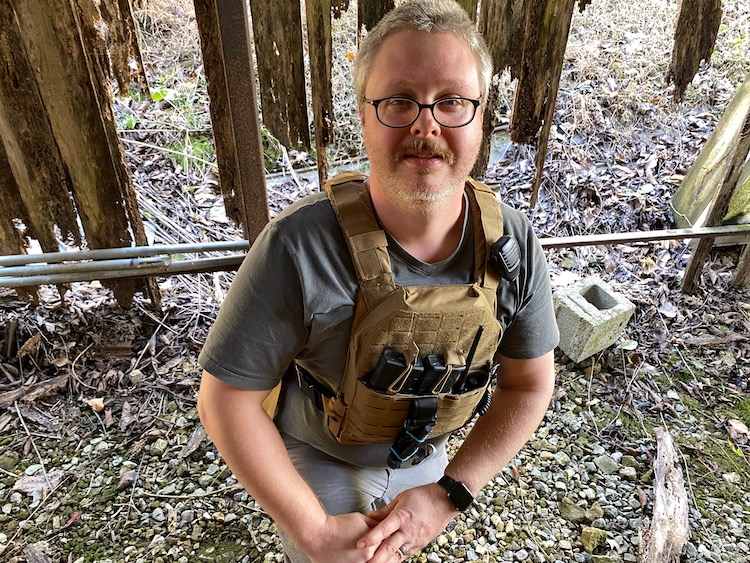
During Prime Day 2020, I picked up a kit that included a BaoFeng UV-5R, the aforementioned shoulder mic and earpiece, an extra battery, and a couple of NA-771 antennas. The antennas are not genuine Nagoyas, but the gear in my kit is fine for a semi-disposable communications setup that stays in my closet 99% of the time.
If you want to go full hardcore LARPer, YouTube is full of tutorials on connecting tactical headsets—which combine audio, a microphone, and hearing protection—to a BaoFeng. But those headsets tend to be expensive—the TCI Liberator II costs over $600. That’s overkill for the most extreme home defense scenarios, and it’s a little silly to pair a $30 radio with a $600 headset. But if tactical gear is your passion, it’s something to be aware of.
Accessories for go-bags
When carrying a BaoFeng in your go-bag, your considerations are a bit different. You might need your radio for tactical communications, but generally speaking, your communication goals are different:
- You may have to call a distant station for help, so you want a longer antenna
- You don’t know how long you’ll be on the run, so you want a longer battery life
- You also want to be able to keep the battery charged indefinitely
One big difference in the way I program my bug-out radios as opposed to my tactical ones is that my bug-out radios have many more frequencies, including weather stations, first responder frequencies, and all ham radio repeaters within a 50-mile radius. I want my tactical radios “slick” and idiot-proof, but for my bug-out radios I want every available option to call for help.
That means you want the greatest possible transmission distance. You might choose to keep an antenna like the Nagoya NA-771 on the radio, but there are some great options to give yourself more range like the Nelson Antenna roll-up slim jim I have. N9TAX also makes a well-regarded roll-up antenna.
These antennas are great for your go-bag because they’re light and roll up into a small loop. To deploy them, you need some way to launch a line into a tree, like a roll of twine, or a slingshot, a nut, and some cordage. Then you tie your line to the end loop of the antenna, pull it up the tree as high as you can without the antenna touch anything, and connect it to your radio.
The downside to these antennas is that they’re not especially mobile. They’re good to use when you’ve set up camp, but you can’t use them on the run.
On the power front, there’s a great option: the BaoFeng extended battery. The 3800 mAh battery adds a couple of inches of length to the radio, which makes it bulkier but also easier to hold. And the battery life is ridiculous. I accidentally left a radio on for a week while the extended battery was attached and once I realized it, I checked the battery life and it was still full.
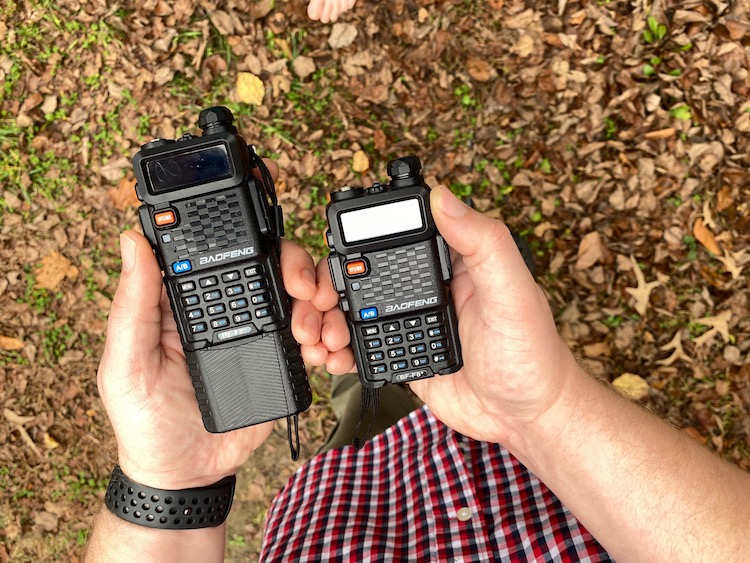
But battery life isn’t the best part. The extended battery features a DC barrel plug input, which means you can charge the radio without carrying the bulky dock in your bag. BTECH sells an adapter cable so you can charge your radio from any suitable power source with a USB port. That could be the battery pack or solar panel you keep in your bag.
A neat BaoFeng pouch
There is a slew of radio pouches on the market, but our own Tom Rader pointed me to one that he’s a big fan of, and after seeing it, I think I’m a fan too: the ITS Tactical 10-4 Radio Pouch. Note that it’s designed to accommodate a BaoFeng with the extended battery installed.
What I like about it is that it can mount on pretty much anything: a belt, PALS/MOLLE webbing, or even on a shoulder strap. And it folds open, giving you full access to all of the radio’s controls. You can easily pull the radio out to use it without much fuss. The ITS 10-4 Radio Pouch can even be equipped with an optional lanyard and retraction system, so you won’t lose your radio even if your grip slips.
I haven’t tried it myself, but it looks like a great product. It’s the first radio pouch I’ve seen that’s grabbed my attention.
BaoFeng in your vehicle
A dedicated mobile radio will perform much better in your vehicle than a handi-talkie, but you can still use your BaoFeng on the road.
The main accessory you need is an external antenna. The inside of a vehicle acts as a Faraday cage, which blocks most radio signals. I use a Nagoya UT-72 on my truck, which is one of the most effective antennas I own. It firmly attaches to the roof with a magnet. The built-in coaxial cable can be routed through your door without much fuss, though you might need to do a little internal cable management to keep from getting wrapped up in it. The antenna uses a PL-259 connector, though it includes an SMA-F pigtail adapter. I find screwing in the SMA connector to be a pain, so at some point, I might get one of the aforementioned BNC adapters so I can easily change antennas.
Another accessory you might consider is a car mount for the radio. I don’t have specific recommendations here, but most phone mounts should work fine. If you go that route, you might also consider the aforementioned speaker mic to make it easier to talk while on the road.
You can power your radio from the battery while in the car, but if you have the BaoFeng battery eliminator, you can spare the wear and tear on your battery. It features a dummy battery to plug into your radio which powers it directly from your vehicle’s cigarette lighter socket. The only bad thing is having to swap the battery out for the eliminator when you get in the car, so it only makes sense for long trips.
Again, here’s yet another advantage of the BaoFeng extended battery: you can keep a USB adapter cable in your car and use any regular USB phone charger to charge your radio.
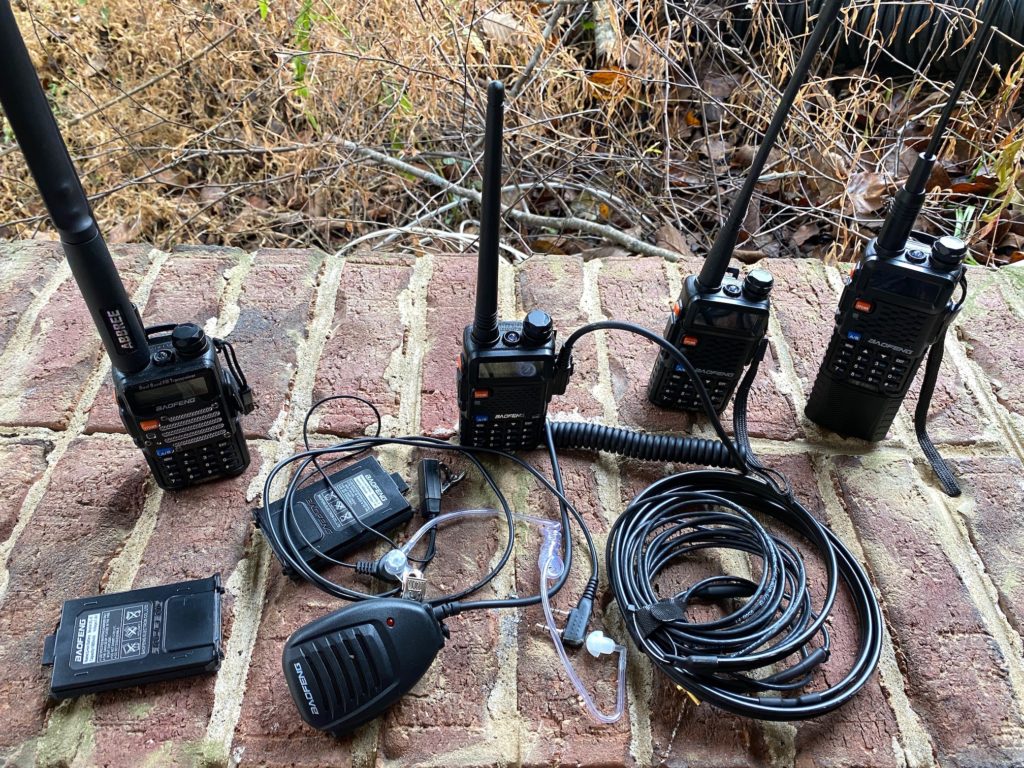
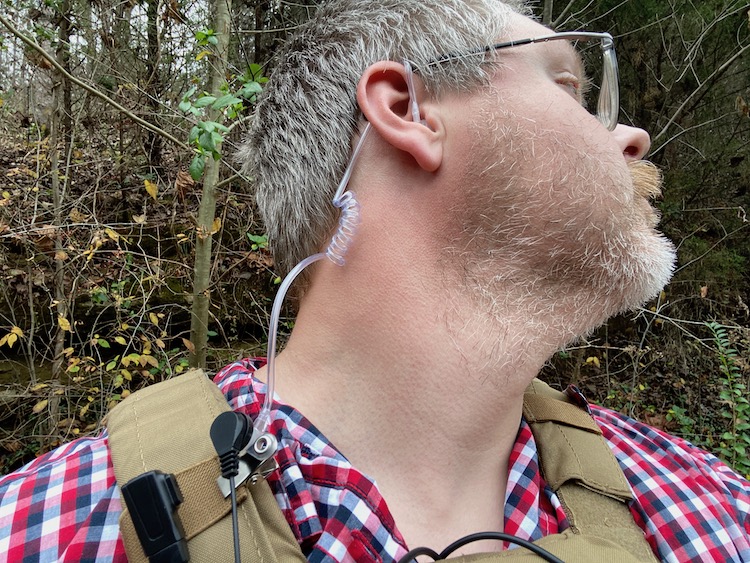
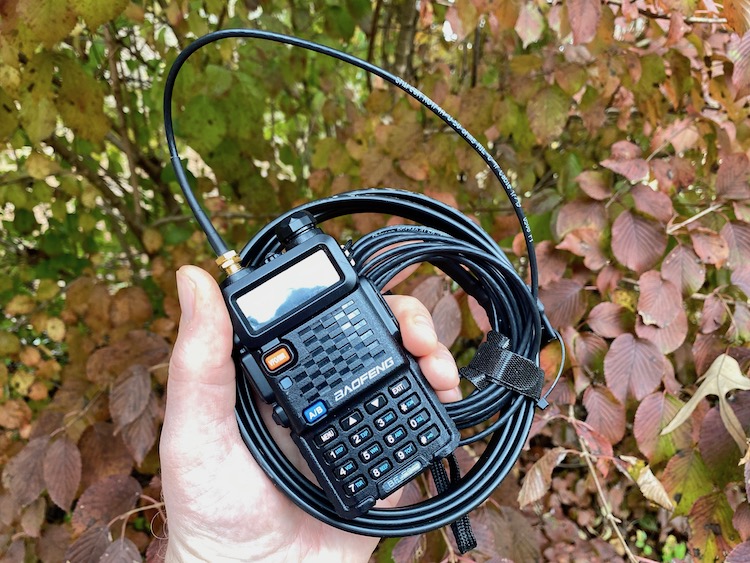
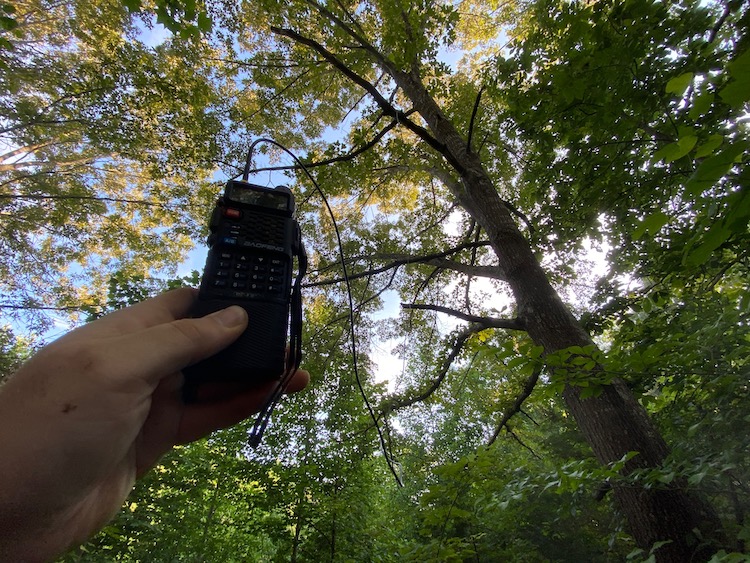
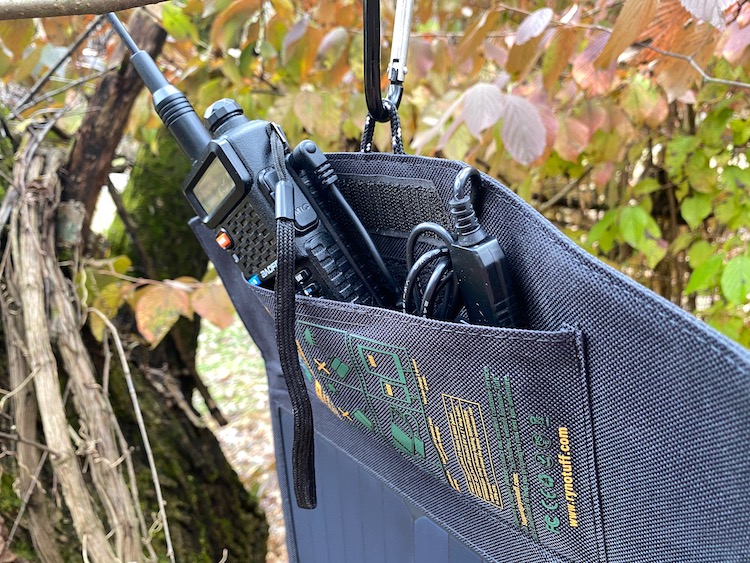
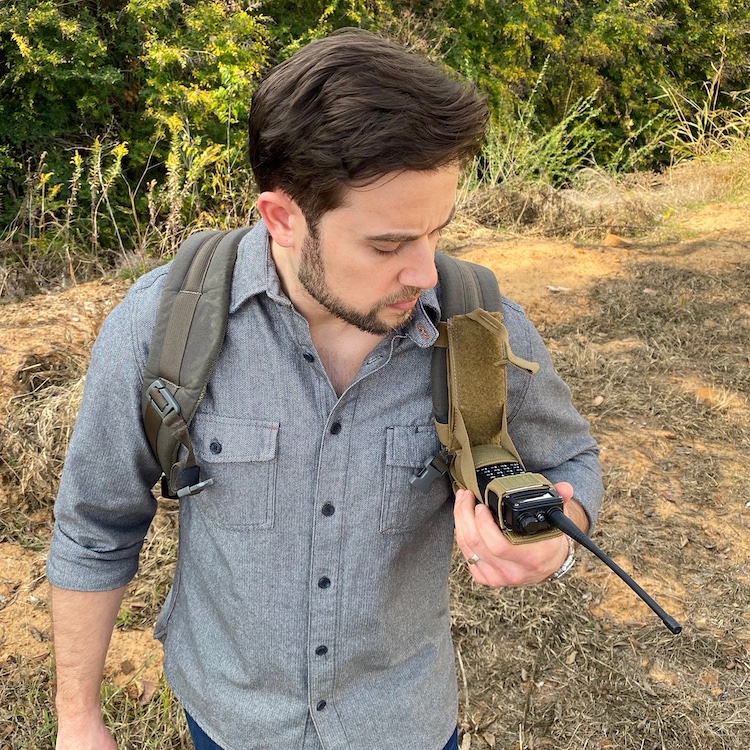
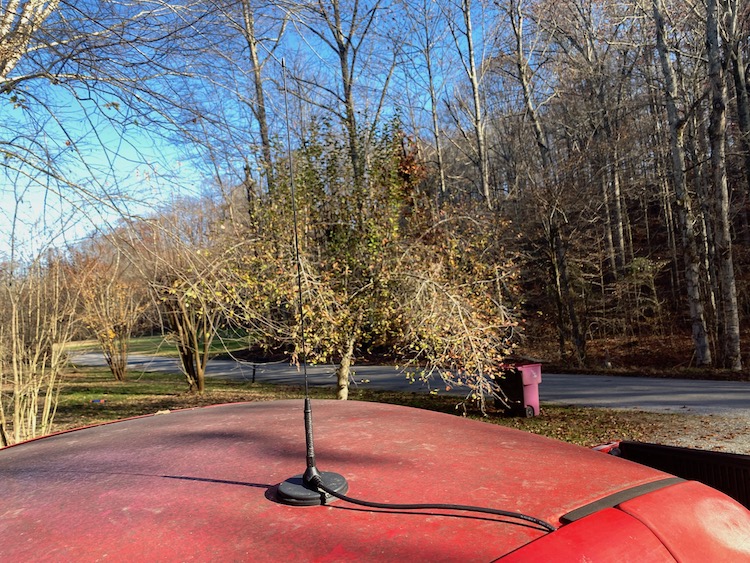
You are reporting the comment """ by on